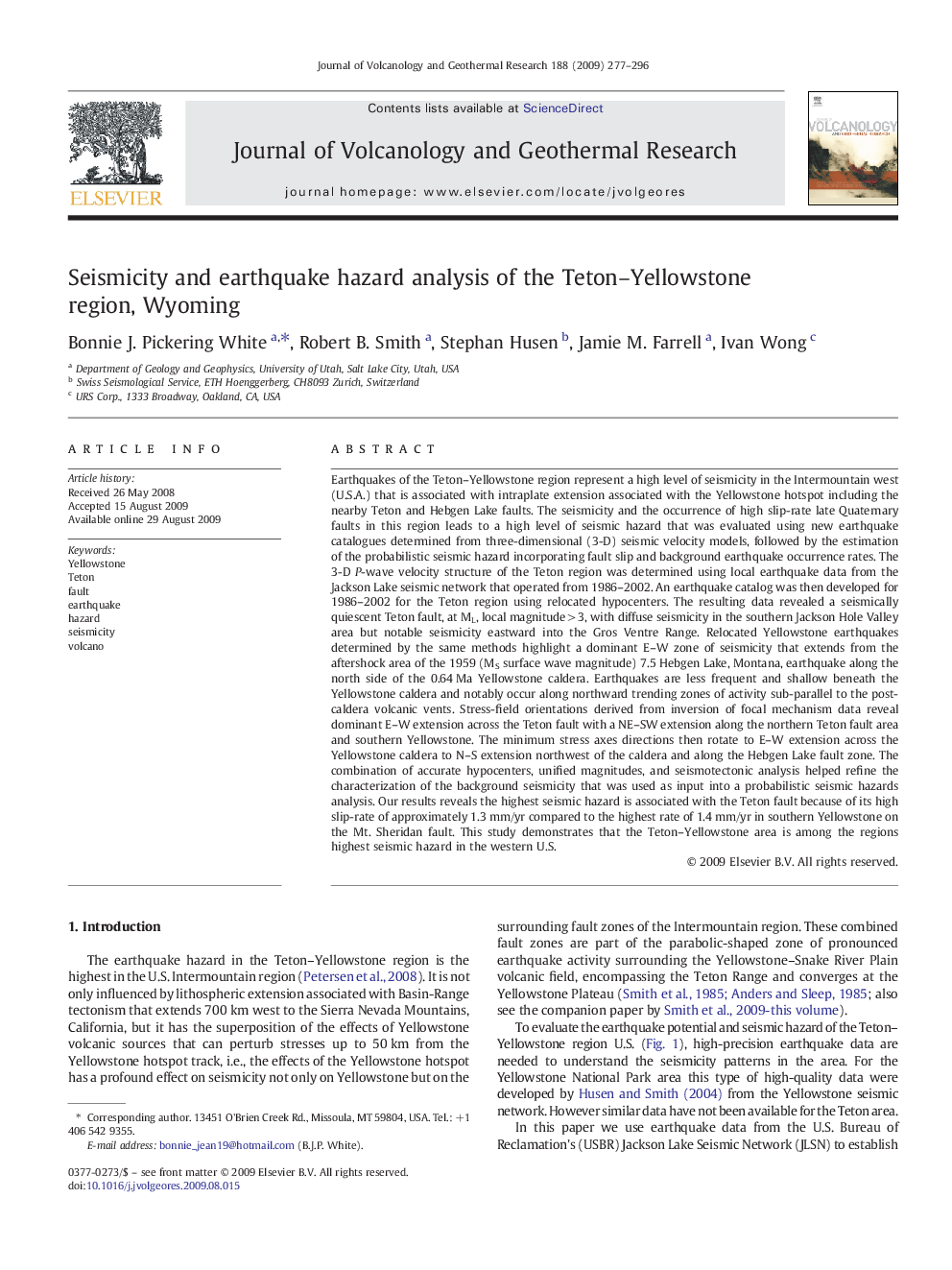| کد مقاله | کد نشریه | سال انتشار | مقاله انگلیسی | نسخه تمام متن |
|---|---|---|---|---|
| 4713186 | 1638428 | 2009 | 20 صفحه PDF | دانلود رایگان |

Earthquakes of the Teton–Yellowstone region represent a high level of seismicity in the Intermountain west (U.S.A.) that is associated with intraplate extension associated with the Yellowstone hotspot including the nearby Teton and Hebgen Lake faults. The seismicity and the occurrence of high slip-rate late Quaternary faults in this region leads to a high level of seismic hazard that was evaluated using new earthquake catalogues determined from three-dimensional (3-D) seismic velocity models, followed by the estimation of the probabilistic seismic hazard incorporating fault slip and background earthquake occurrence rates. The 3-D P-wave velocity structure of the Teton region was determined using local earthquake data from the Jackson Lake seismic network that operated from 1986–2002. An earthquake catalog was then developed for 1986–2002 for the Teton region using relocated hypocenters. The resulting data revealed a seismically quiescent Teton fault, at ML, local magnitude > 3, with diffuse seismicity in the southern Jackson Hole Valley area but notable seismicity eastward into the Gros Ventre Range. Relocated Yellowstone earthquakes determined by the same methods highlight a dominant E–W zone of seismicity that extends from the aftershock area of the 1959 (MS surface wave magnitude) 7.5 Hebgen Lake, Montana, earthquake along the north side of the 0.64 Ma Yellowstone caldera. Earthquakes are less frequent and shallow beneath the Yellowstone caldera and notably occur along northward trending zones of activity sub-parallel to the post-caldera volcanic vents. Stress-field orientations derived from inversion of focal mechanism data reveal dominant E–W extension across the Teton fault with a NE–SW extension along the northern Teton fault area and southern Yellowstone. The minimum stress axes directions then rotate to E–W extension across the Yellowstone caldera to N–S extension northwest of the caldera and along the Hebgen Lake fault zone. The combination of accurate hypocenters, unified magnitudes, and seismotectonic analysis helped refine the characterization of the background seismicity that was used as input into a probabilistic seismic hazards analysis. Our results reveals the highest seismic hazard is associated with the Teton fault because of its high slip-rate of approximately 1.3 mm/yr compared to the highest rate of 1.4 mm/yr in southern Yellowstone on the Mt. Sheridan fault. This study demonstrates that the Teton–Yellowstone area is among the regions highest seismic hazard in the western U.S.
Journal: Journal of Volcanology and Geothermal Research - Volume 188, Issues 1–3, 20 November 2009, Pages 277–296